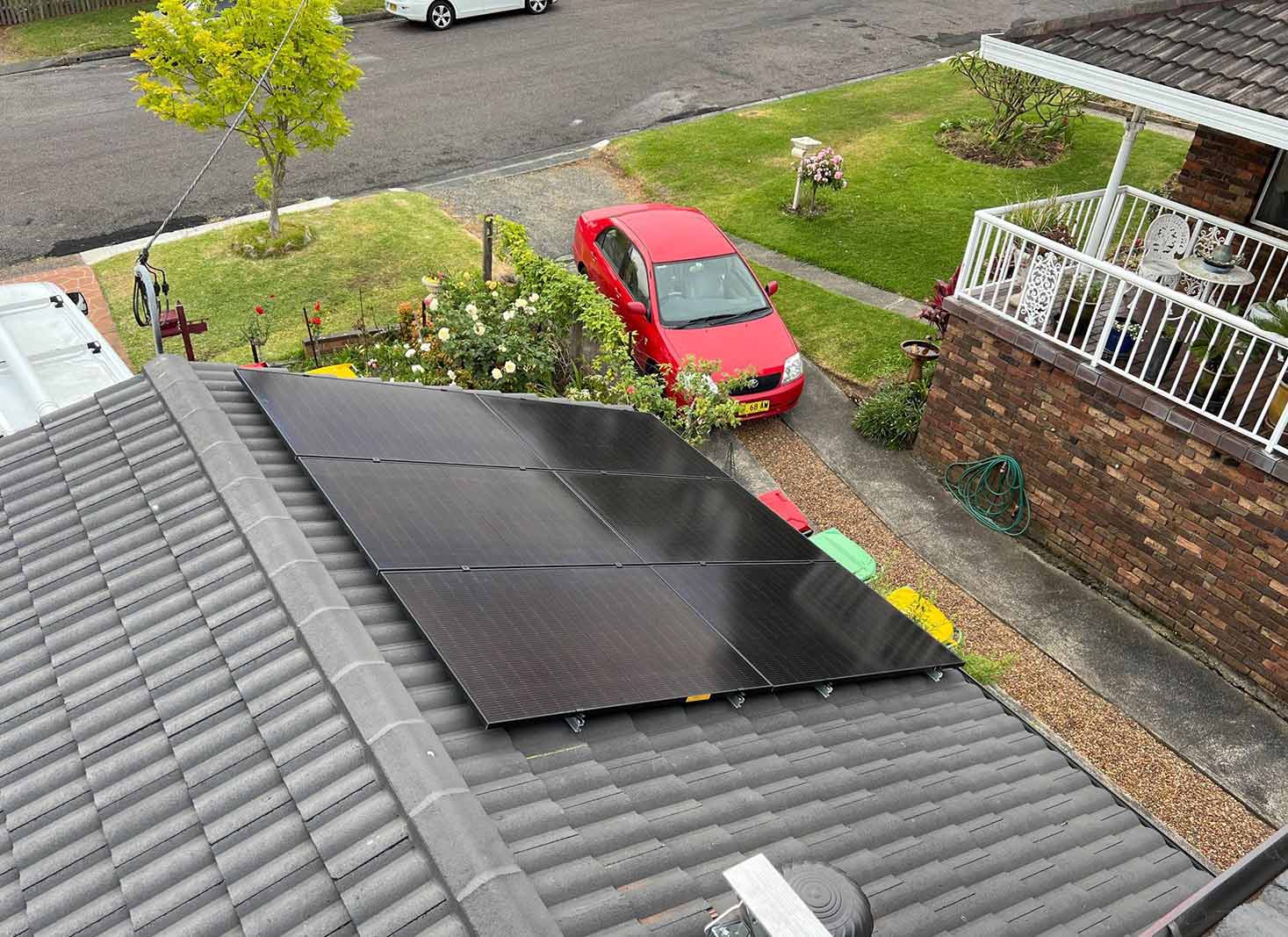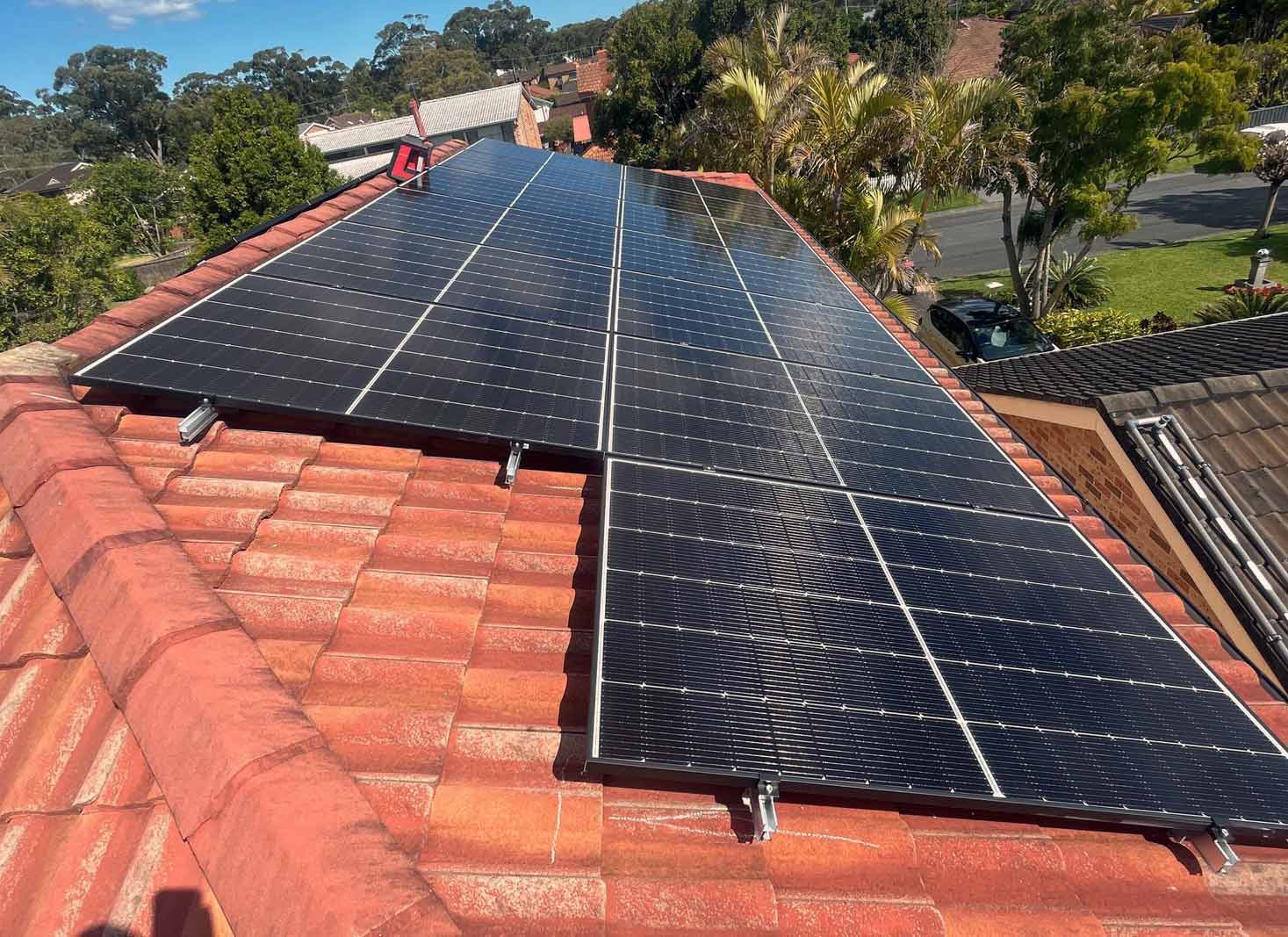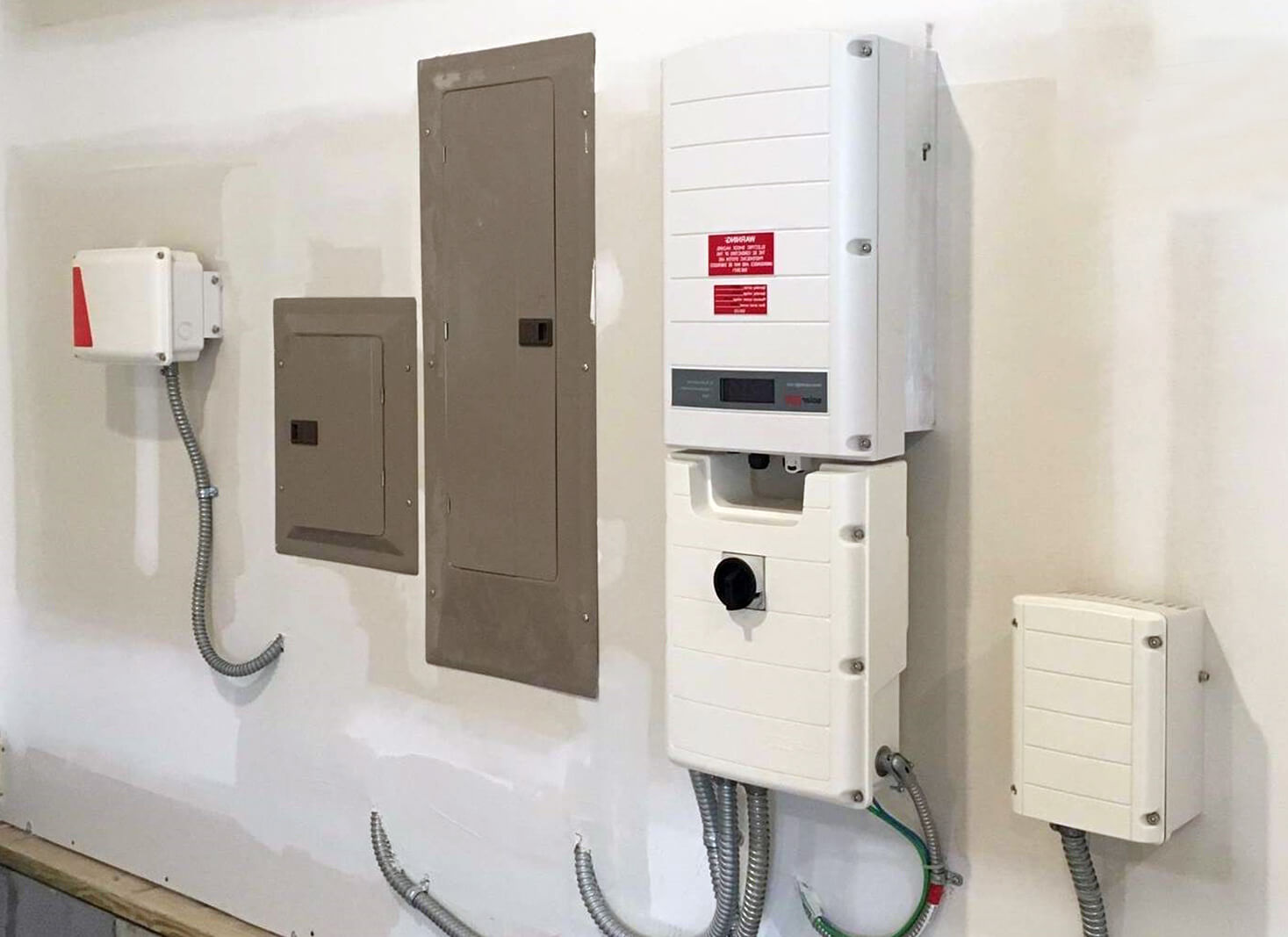2.5kW Solar System: Cost, Rebates & What You Can Run
Perfect for singles or small family units up to three people, the 2.5 kW solar system stands out as an excellent option for home and business use alike, aiming to cut down on power bills. This guide will delve into the world of 2.5 kW solar power systems, uncovering specifics, figures, potential energy output, and the benefits that come with such setups.
Table of Contents
ToggleShort Summary
- A 2.5kW solar system costs $3,950 on average, rebate and GST included.
- 2.5kW solar systems are an efficient and cost-effective choice for powering homes sustainably.
- 2.5kW solar systems can save you up to $1,200 per year.
- The components of a 2.5kW system include quality solar panels, protective glass film, an inverter, and a mounting system.
- Benefits include increased power output, efficiency, and reliability.
How much does a 2.5 kW solar PV system cost?
A 2.5 kW solar system costs $3,950 on average, ranging between $3,200 and $4,700. For high-end solar panels, the cost can go up to $5,900. This price is inclusive of the STC rebate and GST.
The actual cost of a 2.5 kW solar system may vary depending on location, panel quality, type of inverter, and your installer.
The table below shows the average cost of a 2.5 kW solar system in different states in Australia.
2.5 kW solar system cost
| State | Average cost (rebate and GST included) |
|---|---|
| New South Wales | $3,812 |
| Tasmania | $4,010 |
| Victoria | $4,010 |
| Australian Capital Territory | $3,812 |
| Western Australia | $3,812 |
| Northern Territory | $3,674 |
| Queensland | $3,812 |
| South Australia | $3,812 |
Government rebates and incentives for a 2.5 kW solar system
Installing solar panels in Australia is now easy and more affordable, thanks to the Federal Government solar rebates.
If you are eligible for the rebate, you can claim your Small-Scale Technology Certificates and get a discount on the cost of your solar system. However, the process of claiming STCs from the Federal Government is quite complex, so it is best to let your installer claim the STCs on your behalf.
A 2.5 kW solar system can qualify for a rebate of about $1,116, but the exact amount may vary depending on your STC zone. People living in sunnier areas like Zones 1 and 2 get a higher rebate than those living in Zones 3 and 4.
The following table provides you with the average solar rebate you can get for a 2.5 kW solar system based on your STC zone.
| STC zone | City | STC Rating | Rebate Amount |
|---|---|---|---|
| 1 | Townsville, Darwin | 1.622 | $1,116 |
| 2 | Alice Springs | 1.536 | $1,056 |
| 3 | Perth, Canberra, Adelaide, Brisbane, Sydney | 1.382 | $951 |
| 4 | Melbourne | 1.185 | $815 |
Note: The current STC price stands at $39.30
Learn more about solar STCs here.
How much energy does a 2.5kW solar system generate per day?

The energy production capabilities of a 2.5kW solar system can be quite impressive, with an average output of around 10 kWh of electricity per day. However, this output can vary depending on factors such as location, weather conditions, and the time of year.
Average energy output by region
The typical energy output of a 2.5kW solar system can vary depending on the region.
The table below shows the amount of energy a 2.5 kW solar PV system can generate in different regions of Australia.
| City/State | Daily Power Production (kWh) | Annual Power Production (kWh) |
|---|---|---|
| Brisbane, QLD | 10.50 | 3,833 |
| Sydney, NSW | 9.75 | 3,559 |
| Perth, WA | 11.00 | 4,015 |
| Melbourne, VIC | 9.00 | 3,285 |
| Adelaide, SA | 10.50 | 3,833 |
| Hobart, TAS | 8.75 | 3,194 |
| Canberra, ACT | 10.75 | 3,924 |
| Darwin, NT | 11.00 | 4,015 |
Factors affecting energy production of a 2.5 kW solar system
A variety of factors can influence the energy production of a 2.5kW solar system. These include:
- Amount of sunlight available
- Local climate and weather conditions
- Angle of the solar panels
- Efficiency of the solar panels
- Roof orientation and pitch
- Type of inverter used
- Environmental elements like shading
- Panel orientation
- Number and size of solar cells in a solar panel
For example, shading can reduce energy generation, while optimal orientation and hours of sunlight can boost energy production.
Additionally, more solar cells and larger solar cells can lead to greater energy production. Other factors impacting energy production include the manufacturer’s power tolerance, temperature loss, and dirt.
Understanding the factors that can affect the performance of a 2.5kW solar system is essential to ensuring optimal energy production and a swift return on investment.
How many solar panels do I need for a 2.5 kW solar system?
2.5 kW solar systems can consist of different numbers of solar PV panels depending on their size/wattage. For instance, if you use standard 250-watt solar panels, you will need 10 panels. On the other hand, if you use higher-efficiency panels like the 500 W, you will need only 5 solar panels.
Formula:
2,500 Watts / 250W (panel size) = 10 panels
2,500 Watts / 500W (panel size) = 5 panels
Here are common solar panel sizes that can make up a 2.5 kW solar system.
- 250W x 10 (solar panels) = 2.5kW
- 300W x 8 (solar panels) = 2.40kW
- 350W x 7 (solar panels) = 2.45kW
- 370W x 7 (solar panels) = 2.59kW
- 400W x 6 (solar panels) = 2.40kW
- 420W x 6 (solar panels) = 2.52kW
- 480W x 5 (solar panels) = 2.40kW
- 500W x 5 (solar panels) = 2.50kW
Roof space requirements for a 2.5 kW solar system
The average solar panel measures about 1.6m x 1.0 m (1.6 m2) or 1.7m x 1.0m (1.7 m2). A 2.5 kW solar system with 10 250-watt solar panels would require at least 16 square metres of roof space.
Calculations:
1.6 x 10 (panels) = 16 m2 of roof space
1.7 x 10 (panels) = 17 m2 of roof space.
If you install 500W panels, you will require about 8 square metres of roof space, as you will only need 5 panels.
How much can a 2.5 kW solar system save me?

The savings you can get from your 2.5 kW solar system depend on your energy consumption rate. Check out the following scenarios for better understanding:
- If you use all the energy your 2.5 kW solar power system produces, you would save about $1,200 at the end of the first year and $28700 in lifetime savings.
- If you use 50% of the energy and export 50% to the electricity grid, you will save about $850 at the end of the first year.
- If you export all the electricity to the power grid, you will save about $350 at the end of the first year.
To get the most out of your solar system, it is best to use as much power as you can. This is because feed-in tariff rates are low—about 8 cents per kWh—so you will not save much by sending your energy to the grid.
What is the payback period for a 2.5 kW solar system
The payback period for a 2.5 kW solar system is about 4.5 to 5.5 years. However, factors such as your location and the cost of electricity may determine how long it will take for your system to pay for itself.
You can reduce your system’s payback period by maximising your solar power usage and ensuring that your system is well-maintained and optimal at all times.
What is the ideal Household Size for a 2.5kW Solar System
A 2.5 kW solar system is ideal for a small home of about 1–3 people with low energy needs. If your energy usage ranges from 9.3 kWh to 15.1 kWh, then a 2.5 kW solar system is a perfect option for you, as it can help reduce your power bills.
Is a 2.5 kW solar system enough?
While a 2.5 kW solar power system may not run heavy appliances, it can significantly reduce your energy bills.
On average, an Australian home uses about 18 kWh of energy per day, and electricity costs about $150 per month.
With a 2.5 kW system that produces 10 kWh daily, you can run about 55.55% of your home. Therefore, your electricity bill will be reduced by almost a half.
2.5 kW solar system with battery price
A 2.5 kW solar system generates 10 kWh of energy per day. Therefore, a battery with a capacity of 7 kWh would be ideal.
Solar batteries cost between $800 and $2,000 per kWh in Australia. So, your 7 kWh solar battery system would cost between $5,600 and $14,000. Hence, your 2.5 kW solar system with battery will cost approximately $9,550 to $17,950.
The exact cost will depend on the type of battery you choose and the quality of your solar panels.
Understanding 2.5kW solar systems
A 2.5kW solar system is a highly efficient solar energy system capable of producing up to 2.5kW of electricity. It is an increasingly popular choice among homeowners looking for a cost-effective and environmentally friendly way to power their homes. Comprising solar panels, an inverter, and a battery, a 2.5kW solar system works by transforming the sun’s energy into electricity that can be stored and used in your home.
The benefits of a 2.5kW solar system are numerous, ranging from reduced electricity bills and a reliable source of energy to a smaller carbon footprint.
Components of a 2.5kW solar system
The main components of a 2.5kW solar system include solar panels, an inverter, and a mounting system. High-quality multi-diode solar panels are essential for optimal energy production, as they ensure that the system operates efficiently even if one panel becomes partially shaded.
These solar panels are designed with a protective glass film covering, making them weather resistant and increasing their durability.
How a 2.5kW solar system works
The 2.5kW solar system operates by converting sunlight into electricity using solar panels. As the sun’s energy reaches the panels, it is transformed into DC electricity. The solar inverter then steps in to convert this DC energy into AC energy that is suitable for use in your home.
The inverter plays a crucial role in the solar system, ensuring that the electricity produced by the solar panels is transformed into a form that can be safely used in your home. Importantly, the solar inverter does not require power from the current electricity grid.
Choosing the right inverter for your 2.5kW solar system

Selecting the correct inverter size for a 2.5kW solar system is crucial to ensure optimal energy production and to avoid potential issues with the system’s performance. An appropriately sized inverter will help maximise the system’s efficiency and compatibility with the solar panel array.
In this section, we will guide you through the process of selecting the right inverter for your 2.5kW solar system.
Types of inverters
There are several types of inverters that are suitable for 2.5kW solar systems, including compact SolarEdge HD wave inverters, Delta Home Series single-phase inverters, and optimised string inverters.
String inverters, for example, are used in larger solar systems to transform direct current (DC) electricity from solar panels into alternating current (AC) electricity.
On the other hand, microinverters are often used in residential and smaller-scale solar systems, taking DC electricity from solar panels and transforming it into AC electricity. Central, hybrid, and off-grid inverters are other types of inverters available.
Inverter sizing considerations
When sizing an inverter for a 2.5kW solar system, it is important to ensure that the size of the inverter is compatible with the size of the solar panel array. Typically, the inverter size should be equal to or slightly larger than the solar panel array size. This ensures that the system can generate the highest amount of energy possible.
For a 2.5kW solar system, an inverter size of 2.5kW or slightly larger would be suitable.
FAQ's
A 2.5 kW solar system has the capacity to run multiple appliances at once, including a few lights, a television, a PC, a refrigerator, and a few other small appliances.
About 25 to 30 years, at which time their warranty also expires. A good-quality solar system may still be about 70% to 80% efficient after 2 to 3 decades, which means you can still enjoy free solar power for a few more years before you replace your system.
Yes, a 2.5kW solar power system is a worthy investment. If you want to go solar to reduce your power bills and your CO2 footprint, a 2.5 kW system would be the perfect choice to meet your goals and needs.
For a 2.5 kVA inverter, two pieces of 220 Ah batteries are required to ensure continuous power supply during long hours of power outages.
Compare Solar Panel Quotes
Table of Contents
Toggle









